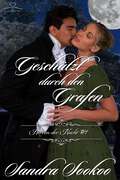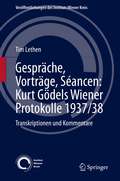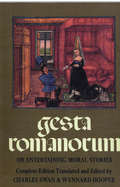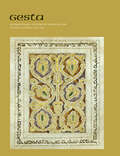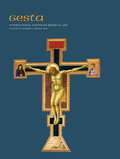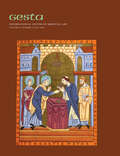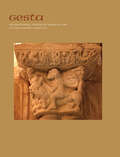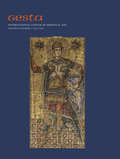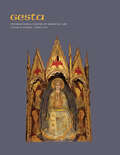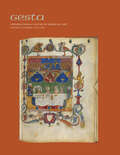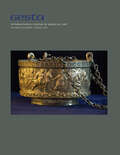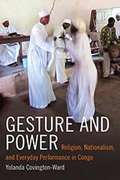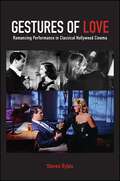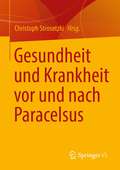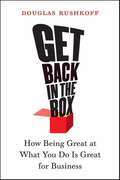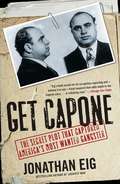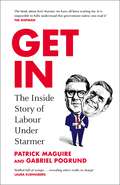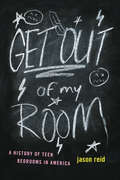- Table View
- List View
Geschätzt durch den Grafen
by Sandra SookooEr wird von Schuldgefühlen und Erinnerungen gequält, aber er kann nicht vergessen... Evan Michael Sedgewyck, der neunte Earl of Coventry, ist dazu verdammt, als Drachenwandler auf der Erde zu wandeln, aber es sind seine Taten, die seine eigene persönliche Hölle verursacht haben. Seit sieben Jahren ist er Witwer, und in dem Moment, in dem er beschließt, einen Ball zu besuchen und vielleicht wieder in den Heiratsmarkt einzutreten, stolpert er über eine Frau, die er für tot hielt - seine Frau. Doch die Wut, die er in sich trägt, lässt nicht nach. Sie sucht nach Antworten, kann sich aber nicht erinnern... Miss Damaris Sheffield-Victoria freut sich auf ihre nächste bezahlte Stelle als Gouvernante, doch als ein gutaussehender Fremder sie auf einem Maskenball zur Seite zieht, sie mit dem Namen einer anderen Frau anspricht und sie innig küsst, wird sie stutzig. Nachdem sie ihn abblitzen lässt und seine Behauptungen zurückweist, erfährt sie, dass sie in Wirklichkeit die Frau des Grafen ist, einen kleinen Sohn hat und seit Jahren vermisst wird. Diese Erkenntnis trägt nicht dazu bei, ihre Angstzustände zu lindern. Sie muss ein zweites Mal die Liebe finden, um ihre Ehe zu retten... Als Evan und Victoria während einer neuen Phase des Werbens aufeinandertreffen, sind sie beide gezwungen, sich mit den Geheimnissen ihrer Vergangenheit und alten Ängsten auseinanderzusetzen. Die Hitze zwischen ihnen wächst und bringt Akzeptanz und Verständnis mit sich, aber nur tiefe, beständige Liebe kann reparieren, was zerbrochen ist. Sie müssen eine überraschende Bedrohung besiegen und für ein glückliches Leben nach dem Tod kämpfen ... wenn sie glauben, dass die Romanze es wert ist, den Schmerz zu heilen.
Gespräche, Vorträge, Séancen: Transkriptionen und Kommentare (Veröffentlichungen des Instituts Wiener Kreis #31)
by Tim LethenThis book provides detailed transcriptions of two notebooks written by Kurt Gödel in Vienna in 1937/38 in the nearly forgotten Gabelsberger shorthand system. The first of these notebooks, simply entitled as the Protokoll-book, contains notes on conversations Gödel had with people like Rudolf Carnap, Rose Rand, Friedrich Waismann, Else Frenkel-Brunswik, and many others who were—at least to some degree—connected to the Vienna Circle. It also covers detailed descriptions of the regular meetings organized by Edgar Zilsel. The second notebook includes notes on a series of lectures given at the Vienna Psychological Institute, which was led by Karl Bühler at the time. Both notebooks are part of Gödel’s huge Nachlass kept at the Institute for Advanced Study in Princeton, which consists of literally thousands of stenographic pages covering logic and the foundations of mathematics, philosophy, physics, and theology. The now transcribed and commented notes reveal a very personal side of Gödel which has—to a large extent—been unknown to a mainly scientific-oriented audience. The book is of interest to people wanting to learn about Gödel’s personal background in Vienna in the late 1930s as well as his keen interest in philosophy, psychology, and parapsychology.
Gesta Romanorum
by Wynnard Hooper Charles SwanDiscover one of the greatest collections of medieval literature with this historic work, which features more than 180 tales of Greeks, Romans, Britons, biblical figures, and others. Drawn from European and Asian sources, the stories abound in fascinating figures from all walks of life, including Pope Gregory, Noah, Socrates, and a host of other characters, from emperors to pirates.Chaucer, Boccaccio, and Shakespeare are among the writers influenced by these fables, and readers may recognize scenes reminiscent of The Merchant of Venice, King Lear, "The Lawyer's Tale" from Canterbury Tales, and other works. The origins of Gesta Romanorum are obscure; it is thought to have been compiled in the late thirteenth century, and the author's identity is uncertain. As the name suggests, the stories were written in Latin. Gesta, meaning "deeds," later came to signify "jest" because of these lighthearted tales and their enduring power to amuse and inspire.
Gesta, volume 60 number 2 (Fall 2021)
by GestaThis is volume 60 issue 2 of Gesta. Gesta publishes original research on medieval art and architecture. The journal embraces all facets of artistic production from ca. 300 to ca. 1500 C.E. in every corner of the medieval world.
Gesta, volume 61 number 1 (Spring 2022)
by GestaThis is volume 61 issue 1 of Gesta. Gesta publishes original research on medieval art and architecture. The journal embraces all facets of artistic production from ca. 300 to ca. 1500 C.E. in every corner of the medieval world.
Gesta, volume 61 number 2 (Fall 2022)
by GestaThis is volume 61 issue 2 of Gesta. Gesta publishes original research on medieval art and architecture. The journal embraces all facets of artistic production from ca. 300 to ca. 1500 C.E. in every corner of the medieval world.
Gesta, volume 62 number 1 (Spring 2023)
by GestaThis is volume 62 issue 1 of Gesta. Gesta publishes original research on medieval art and architecture. The journal embraces all facets of artistic production from ca. 300 to ca. 1500 C.E. in every corner of the medieval world.
Gesta, volume 62 number 2 (Fall 2023)
by GestaThis is volume 62 issue 2 of Gesta. Gesta publishes original research on medieval art and architecture. The journal embraces all facets of artistic production from ca. 300 to ca. 1500 C.E. in every corner of the medieval world.
Gesta, volume 63 number 1 (Spring 2024)
by GestaThis is volume 63 issue 1 of Gesta. Gesta publishes original research on medieval art and architecture. The journal embraces all facets of artistic production from ca. 300 to ca. 1500 C.E. in every corner of the medieval world.
Gesta, volume 63 number 2 (Fall 2024)
by GestaThis is volume 63 issue 2 of Gesta. Gesta publishes original research on medieval art and architecture. The journal embraces all facets of artistic production from ca. 300 to ca. 1500 C.E. in every corner of the medieval world.
Gesta, volume 64 number 1 (Spring 2025)
by GestaThis is volume 64 issue 1 of Gesta. Gesta publishes original research on medieval art and architecture. The journal embraces all facets of artistic production from ca. 300 to ca. 1500 C.E. in every corner of the medieval world.
Gesture and Power: Religion, Nationalism, and Everyday Performance in Congo
by Yolanda Covington-WardIn Gesture and Power Yolanda Covington-Ward examines the everyday embodied practices and performances of the BisiKongo people of the Lower Congo to show how their gestures, dances, and spirituality are critical in mobilizing social and political action. Conceiving of the body as the center of analysis, a catalyst for social action, and as a conduit for the social construction of reality, Covington-Ward focuses on specific flash points in the last ninety years of Congo's troubled history, when embodied performance was used to stake political claims, foster dissent, and enforce power. In the 1920s Simon Kimbangu started a Christian prophetic movement based on spirit-induced trembling, which swept through the Lower Congo, subverting Belgian colonial authority. Following independence, dictator Mobutu Sese Seko required citizens to dance and sing nationalist songs daily as a means of maintaining political control. More recently, embodied performance has again stoked reform, as nationalist groups such as Bundu dia Kongo advocate for a return to precolonial religious practices and non-Western gestures such as traditional greetings. In exploring these embodied expressions of Congolese agency, Covington-Ward provides a framework for understanding how embodied practices transmit social values, identities, and cultural history throughout Africa and the diaspora.
Gestures of Love: Romancing Performance in Classical Hollywood Cinema (SUNY series, Horizons of Cinema)
by Steven RybinGestures of Love considers the viewer's enchantment with charismatic actors in film as the starting point for closely analyzing the performance of love in movies. Written with a thoughtful adoration for the actors who move us, Steven Rybin examines several of cinema's most beloved on-screen movie couples, including Katharine Hepburn and Cary Grant, Myrna Loy and William Powell, Carole Lombard and John Barrymore, Gene Tierney and Dana Andrews, Lauren Bacall and Humphrey Bogart, and Rock Hudson and Dorothy Malone. Using the classical genres of screwball comedy, film noir, and the family melodrama as touchstones, Rybin places the depiction of romance in films into dialogue with the viewer's own emotional bond to the actors on the screen. In doing so, he offers rich new analyses of such classic films as Bringing Up Baby, The Thin Man, Twentieth Century, Laura, To Have and Have Not, Tea and Sympathy, Written on the Wind, and more.
Gestures of Seeing in Film, Video and Drawing (Routledge Advances in Art and Visual Studies)
by Øyvind Vågnes Asbjørn Grønstad Henrik GustafssonThe first book of its kind, Gestures of Seeing in Film, Video and Drawing engages broadly with the often too neglected yet significant questions of gesture in visual culture. In our turbulent mediasphere where images – as lenses bearing on their own circumstances – are constantly mobilized to enact symbolic forms of warfare and where they get entangled in all kinds of cultural conflicts and controversies, a turn to the gestural life of images seems to promise a particularly pertinent avenue of intellectual inquiry. The complex gestures of the artwork remain an under-explored theoretical topos in contemporary visual culture studies. In visual art, the gestural appears to be that which intervenes between form and content, materiality and meaning. But as a conceptual force it also impinges upon the very process of seeing itself. As a critical and heuristic trope, the gestural galvanizes many of the most pertinent areas of inquiry in contemporary debates and scholarship in visual culture and related disciplines: ethics (images and their values and affects), aesthetics (from visual essentialism to transesthetics and synesthesia), ecology (iconoclastic gestures and spaces of conflict), and epistemology (questions of the archive, memory and documentation). Offering fresh perspectives on many of these areas, Gestures of Seeing in Film, Video and Drawing will be intensely awaited by readers from and across several disciplines, such as anthropology, linguistics, performance, theater, film and visual studies.
Gesundheit als Wandlungsfähigkeit: Viktor von Weizsäckers Beitrag zu einer kritischen Medizintheorie
by Hans-Martin RiegerJedes Verständnis von Gesundheit und Krankheit ist von Hintergrundvorstellungen abhängig, die medizintheoretisch und anthropologisch bedacht zu werden verdienen. Für die Medizin empfiehlt sich eine kritische Medizintheorie und ein anthropologisches Konzept auch um ihrer wissenschaftlichen Selbstständigkeit willen. Dieses grundlegende Anliegen kennzeichnet die Arbeit des Neurologen und späteren Ordinarius für allgemeine klinische Medizin Viktor von Weizsäcker(1886-1957) und ist von bleibender Aktualität. Die Untersuchung bietet eine Einführung in Weizsäckers Gesundheitsverständnis vor dem Hintergrund gegenwärtiger Diskussionen. Von da aus schreitet sie weiter zur Reflexion der wissenschaftlichen Grundlagen von Biologie und Humanwissenschaften und hinterfragt die Übernahme naturwissenschaftlicher Kategorien auf das Leben im Allgemeinen und auf den Menschen im Besonderen. Das Programm einer „Einführung des Subjekts“ erfordert eine Revision des biologischen und medizinischen Denkens. Zentral wird die Grundstruktur des Verhältnisses eines Organismus bzw. eines leiblichen Subjekts zu seiner bedeutungsvermittelten Umwelt. Innerhalb dieser Struktur kommt Gesundheit als lebensgeschichtliche Kohärenz oder Responsivität zu stehen. Ermöglicht wird diese durch eine psychophysische Wandlungsfähigkeit des Organismus. Weizsäckers Forschungsimpuls für gegenwärtige Problemstellungen und Modellbildungen ist als beachtlich zu bewerten – und zwar gerade dann, wenn man die von ihm gefundenen oder behaupteten Grundstrukturen wissenschaftsgeschichtlich erschließt. Viele dieser Grundstrukturen sind nicht nur für eine heutige Grundlegung der Psychosomatik und für den Umgang mit den Neurowissenschaften, sondern auch fürVersuche einer integrativen Medizin wegweisend.
Gesundheit und Krankheit vor und nach Paracelsus
by Christoph StrosetzkiBedeutend ist Theophrast von Hohenheim (ca. 1493/4–1541), genannt Paracelsus, vor allem durch sein Aufbegehren gegen die klassischen antiken und arabisch-mittelalterlichen Autoritäten in der Medizin. Grundlage sollen nicht mehr die überlieferten Schriften, sondern experientia, experimenta und ratio sein. Von dieser Basis soll künftig ausgegangen werden, was Paracelsus auch dadurch unterstreicht, dass er seine Schriften in deutscher Sprache veröffentlicht. Indem er sich gegen die dogmatische Auslegung antiker Texte wandte, wollte er die Ära Galens beenden. Die Chirurgie wollte er auf universitären Rang erheben. Nach Paracelsus ist es die Natur, die heilt, wobei der Arzt nur Helfer ist. Wenn er Gesundheit als harmonische Ordnung im organischen Ablauf definiert, dann ist er bestrebt, Makrokosmos und Mikrokosmos, Diesseits und Jenseits, in Einklang zu bringen. Die Welt ist für ihn kein Nebeneinander isolierter Elemente, sondern eine Einheit. Auch beim Menschen erscheint ihm Sinnliches und Seelisches aufeinander bezogen. Archeus nennt er ein immaterielles Prinzip, in dem er den Träger der belebenden Kraft in der Natur und im Menschen, also im Makrokosmos wie im Mikrokosmos, festmacht. Im Sinne der Renaissance sieht er den Menschen als Mittelpunkt des Kosmos und seine Aufgabe im Erkennen der Welt.
Get Back in the Box: How Being Great at What You Do Is Great for Business
by Douglas RushkoffDouglas Rushkoff was one of the first social commentators to identify the new culture around the internet. He has spent nearly a decade advising companies on the ways they can re-orient their businesses to the transformations the internet has caused. Through his speaking and consulting, Rushkoff has discovered an important and unrecognized shift in American business. Too many companies are panicked and operating in survival mode when the worst of the crisis has already passed. Likening the internet transformation to the intellectual and technological ferment of the Enlightment, Rushkoff suggests we have a remarkable opportunity to re-integrate our new perspective with the work we actually do. Instead of running around trying to "think out of the box," Rushkoff demonstrates, now is the time to "get back in the box" and improve the way we do our jobs, run our operations and drive innovation from the ground up. Combining stories gleaned from his consulting with a thrilling tour of history's dramatic moments and clever readings of cultural shift we've just experienced, Rushkoff offers a compelling vision of the simple and effective ways businesses can re-invigorate themselves.
Get Capone: The Secret Plot That Captured America's Most Wanted Gangster
by Jonathan EigDrawing on thousands of pages of recently discovered government documents, wiretap transcripts, and Al Capone's handwritten personal letters, New York Times bestselling author Jonathan Eig tells the dramatic story of the rise and fall of the nation's most notorious criminal in rich new detail. From the moment he arrived in Chicago in 1920, Capone found himself in a world of limitless opportunity. He was an impetuous, affable young man of average intelligence, ill prepared for fame and fortune, whose most notable characteristic was his scarred left cheek. Yet within a few years, Capone controlled an illegal bootlegging business with annual revenue rivaling that of some of the nation's largest corporations. Along the way he corrupted the Chicago police force and local courts while becoming one of the world's first international celebrities. A furious President Herbert Hoover insisted that Capone be brought to justice because the criminal was making a mockery of federal law. Legend credits Eliot Ness and his "Untouchables" with apprehending Capone. But it was the U. S. attorney in Chicago and little-known agents working on direct orders from the White House who compromised their ethics - and risked their lives - to get their man. The most infamous crime attributed to Capone was the St. Valentine's Day Massacre, a crime that Capone insisted he didn't commit. Using newly discovered FBI records, Eig offers a surprising explanation for the murders. Get Capone explores every aspect of the man called "Scarface," paying particular attention to the myths that have for so long surrounded and obscured him. Capone emerges as a worldly, emotionally complex man, doomed as much by his ego as by his vicious criminality. This is the real Al Capone.
Get In: The Sunday Times Bestselling Inside Story of Labour Under Starmer
by Patrick Maguire Gabriel PogrundTHE SUNDAY TIMES BESTSELLER, Get In is the definitive behind-the-scenes account of Labour’s brutal reinvention and dramatic return to power.'The book about Keir Starmer we have all been waiting for' TIM SHIPMAN'Stuffed full of scoops . . . revealing who's really in charge' LAURA KUENSSBERG'A remarkable piece of journalism' RORY STEWARTFrom electoral wipeout in 2019 to landslide victory in 2024 and on into Labour’s first hundred days in government, Get In is a blistering exposé of the most significant and ruthless political transformation in a generation.At its heart is Morgan McSweeney, a mastermind of political subterfuge and author of a strategy to eviscerate the party, bury the left and rebuild it as a vote-winning machine. In Starmer he saw the perfect vessel for his vision: a man with no political identity but burning with ambition and a single all-consuming principle: to win.Drawing on unrivalled access throughout the party and extensive leaks of internal party documents and WhatsApp messages, Get In shows how together they betrayed and marginalised Corbyn and his followers, then forged a path in which promises, and at times principles, were readily discarded in pursuit of power.Richly peopled with the major figures of Labour present and past, this is the coming-of-age story of Britain's government. In an era in which faith in politics has plummeted, this is how to game your way to the ultimate prize. But what on earth do you do when you get there?‘A rattling tale terrifically well told . . . extremely well-sourced . . . dramatic detail’ Andrew Rawnsley, Observer‘Fast-paced . . . cutting one-liners . . . it reads as if the authors were alongside McSweeney and Starmer’ Jason Cowley, Sunday Times‘Fascinating . . . devastating . . . full of lively stories’ Andrew Marr, New Statesman‘Unsparing . . . brilliant . . . so many golden nuggets’ Michael Gove, Spectator‘Revealing . . . pacy . . . dispassionate but informed . . . a cracking read’ Financial Times‘A gripping story of raw politics and ruthless men’ Helen Lewis'Revealing . . . compelling' Anne McElvoy, Evening Standard'Extraordinarily detailed and sometimes bloodstained' Tom Baldwin, Guardian'As excruciating as it is insightful' Economist‘A superb work of contemporary history which defines the Starmer premiership’ Peter Oborne'If you have questions about Starmer’s budding reign . . . expect many of them to be answered' Kara Kennedy, Telegraph ****‘Compelling’ John Harris, Guardian‘Fascinating’ Andrew Grice, Independent
Get Me Out: A History of Childbirth from the Garden of Eden to the Sperm Bank
by Randi Hutter Epstein"[An] engrossing survey of the history of childbirth."--Stephen Lowman, Washington Post Making and having babies--what it takes to get pregnant, stay pregnant, and deliver--have mystified women and men throughout human history. The insatiably curious Randi Hutter Epstein journeys through history, fads, and fables, and to the fringe of science. Here is an entertaining must-read--an enlightening celebration of human life.
Get Oregonized: Oregon's History -- People, Natural Resources, Agriculture
by Rod Fielder Dona CoonGet Oregonized is a history book written for students in grades three, four and five studying Oregon's history and regions. The text is designed to help students understand and appreciate the rich history, people and natural resources that shaped the state of Oregon.
Get Out of My Room!: A History of Teen Bedrooms in America
by Jason ReidTeenage life is tough. You’re at the mercy of parents, teachers, and siblings, all of whom insist on continuing to treat you like a kid and refuse to leave you alone. So what do you do when it all gets to be too much? You retreat to your room (and maybe slam the door). Even in our era of Snapchat and hoverboards, bedrooms remain a key part of teenage life, one of the only areas where a teen can exert control and find some privacy. And while these separate bedrooms only became commonplace after World War II, the idea of the teen bedroom has been around for a long time. With Get Out of My Room!, Jason Reid digs into the deep historical roots of the teen bedroom and its surprising cultural power. He starts in the first half of the nineteenth century, when urban-dwelling middle-class families began to consider offering teens their own spaces in the home, and he traces that concept through subsequent decades, as social, economic, cultural, and demographic changes caused it to become more widespread. Along the way, Reid shows us how the teen bedroom, with its stuffed animals, movie posters, AM radios, and other trappings of youthful identity, reflected the growing involvement of young people in American popular culture, and also how teens and parents, in the shadow of ongoing social changes, continually negotiated the boundaries of this intensely personal space. Richly detailed and full of surprising stories and insights, Get Out of My Room! is sure to offer insight and entertainment to anyone with wistful memories of their teenage years. (But little brothers should definitely keep out.)
